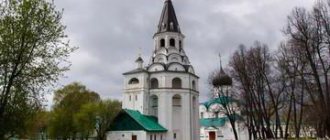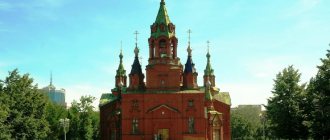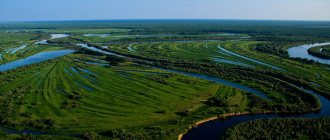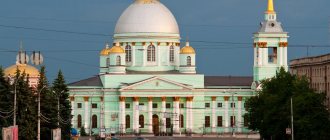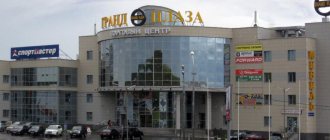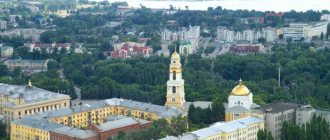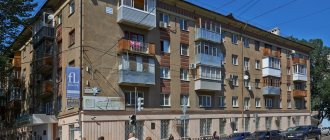The lands of the Stavropol Territory have been inhabited since ancient times. This is indicated by archaeological finds from the Paleolithic era to the Middle Ages and older. The region was popular even during the times of kings and emperors, since every secular person sought to relax surrounded by a mountain landscape and improve their health at healing springs.
The beauty of the sunny region won the heart of the poet Alexander Sergeevich Pushkin. In his letters and notes, Pushkin tried to convey his feelings and every detail of the Stavropol region. Inspired, Alexander Sergeevich writes a new work, “Prisoner of the Caucasus.”
The life of Mikhail Yuryevich Lermontov is also connected with the Stavropol Territory. For the first time, as a child, Lermontov was here with his grandmother. During the second trip, he even composed a naive declaration of love for the “southern mountains.” Mikhail Yuryevich finds the prototype of one of the characters in the story “A Hero of Our Time,” and under the influence of the stories of veterans of the Patriotic War of 1812, he writes his most famous work, “Borodino.”
Cities and villages
Stavropol
Stavropol is the administrative center of the region. The city arose from a fortress, which was built in 1777 under the leadership of Alexander Suvorov. There are several versions explaining why Stavropol is called the “city of the cross”:
- the fortress, created for defense, resembled the shape of a cross;
- “stavros” is translated from Greek as “cross”;
- the legend about the found stone cross, which eventually became the first monument;
- The construction site of the fortress was marked on the map with a cross.
There is a legend that Nicholas I wanted to change the administrative center of Ciscaucasia and was faced with a choice until he drank water from a local stream. It was so tasty and pure that the privileges passed from Kuban to Stavropol.
Also, according to archaeologists, on the territory of the sunny region in ancient times there was an ocean, which later became the Sarmatian Sea.
The city is considered one of the greenest cities in our country due to its numerous plants and forests, and is also included in the list of historical cities in Russia.
Places worth visiting:
- Stavropol Museum of Local Lore, founded in 1905. There is a collection of butterflies, elephant skeletons and equipment for various purposes. Its exposition includes more than 300 thousand exhibits.
- The Museum of Cossack History is an exhibition and cultural center of the local Cossacks. The museum contains weapons, books and icons, as well as a large-scale diorama of the Stavropol fortress.
- Kazan Cathedral is the cathedral of Stavropol, built in the 1840s and restored in the 2000s.
- Cold Springs is a memorial in memory of those killed during the Nazi occupation, which is located among springs in a forest area. Previously, this structure served as a source of water for the city.
- Victory Park is the central park of Stavropol, which houses cafes, playgrounds, an equestrian club, a water park and various attractions.
Useful and interesting facts about Stavropol and its attractions.
Essentuki
Essentuki is a resort town in the Stavropol Territory, founded in 1798. The name comes from the Essentuk River. For many years, the properties of the waters of this city remained unnoticed, although the Cossacks often watched their horses drink from the source with pleasure. Only 13 years later, Professor A.P. Nelyubin was able to describe the beneficial properties of these waters, writing that they were able to heal wounds and would introduce the culture into local life.
Read more about what to do in Essentuki.
These alkaline waters attracted the attention of noble fat men who believed that thanks to the mineral waters they would begin to lose weight. The influx of visitors increased every year, this led to the creation of a technologically advanced and most beautiful building in Europe - a mud bath.
Places worth visiting:
- Essentuki mud baths named after. Semeshko. The building is not only an architectural gem, but also has a developed technical system that provides guests with high-quality wellness treatments.
- Tsander Institute of Mechanotherapy. Here are collected various exercise machines that are more than 100 years old. The devices are intended for the treatment of joints, massage and even the treatment of asthma.
- The spa's Healing Park is a local treasure with galleries, bathrooms, gazebos and a theatre.
- The Five Thousand Drinking Gallery is the largest drinking gallery in Europe, built in the 90s. In this gallery you can enjoy pure healing water completely free of charge.
- St. George's Convent. Thanks to the domes, the temple can be seen from anywhere in the city.
Pyatigorsk
Pyatigorsk is the most multifunctional and balneological resort city in the region, which is often called the museum of mineral waters. Because here there are four types of sources: sulfide, carbon dioxide-hydrogen sulfide, carbon dioxide, radon and mineral waters. The city has a telling name, thanks to the five peaks of Beshtau. Pyatigorsk arose in 1780.
What to do in Pyatigorsk: overview of the main attractions.
It was visited by Russian classics, poets and composers: Lev Nikolaevich Tolstoy, Mikhail Yuryevich Lermontov, Fyodor Ivanovich Chaliapin and others. The resort city, in addition to healing waters, uses healing mud from Lake Tambukan.
In Pyatigorsk, Mikhail Yuryevich Lermontov rested, lived, worked and died in a duel.
Places worth visiting:
- Lake Proval, which is located in an underground cave. You can look at the turquoise hydrogen sulfide lake completely free of charge. This is the place where the hero of the book “The Twelve Chairs” Ostap Bender sold entrance tickets.
- Diana's Grotto. An artificially created cave on the slope of Hot Mountain by the Bernardazzi brothers. Presumably, Lermontov was a frequent guest here and also organized a ball.
- Tsvetnik Park is a gathering place for the main attractions and one of the oldest places in Pyatigorsk. In the park you can visit the Lermontov Gallery, which was built more than a hundred years ago, take medicinal Ermolov baths and see a sculpture of the city’s symbol - a bronze eagle.
- Academic gallery. It was here that the first drinking spring was discovered.
- Place of Lermontov's duel. Located at the foot of Mount Mashuk. The tragic events of 1841 unfolded in this place. A documentary film about the poet’s life was also filmed here.
Kislovodsk
Kislovodsk is the largest recreational, health and climatic resort in the south of Russia. The city was founded in 1803, but the land began to be developed back in the 5th century BC. Thanks to its location among caves and grottoes, Kislovodsk has a unique microclimate: thin air, the sun shines almost constantly.
A walk around Kislovodsk: all the most important things in one day.
The city has a symbolic name because of the characteristic sour taste of mineral water - Narzan. Mineral water, which improves blood circulation, digestion processes and strengthens the nervous system, is extracted from wells - it is formed from the melting Elbrus glacier.
During the Great Patriotic War, Kislovodsk was a hospital city. Lermontov, Glinka, Chekhov and other creative personalities visited here. Alexander Solzhenitsyn was also born here.
Places worth visiting:
- The Narzan Gallery is the drinking center of Kislovodsk and a cultural monument of federal significance, which was founded in 1823. Entrance to the gallery is free, but to drink the healing water, you need to buy a plastic cup.
- “Honey Falls” is a gorge formed under the influence of natural processes. The flows of the waterfalls are so strong that small lakes appear at the bottom in which visitors swim.
- The red and gray stones are tourist attractions that have an unusual color due to nitrogen hydroxide and are shaped like animals.
- The spa park is the largest man-made park in Europe, which was founded in 1823. It received the status of a National Park and is under special protection. The Resort Park has evergreen plants, flower beds and rose gardens.
- Lermontov Rock gets its name from its mention in Mikhail Yuryevich’s work “Hero of Our Time.” Archaeological exhibits and even burial grounds were found here.
Zheleznovodsk
Zheleznovodsk is a small, quiet mud resort town, founded in 1810. The city was discovered by the Russian doctor F.P. Gaazov, thanks to two mineral springs. Its healing waters can have a beneficial effect on the kidneys, nervous and digestive systems, and others.
All interesting places and stories of Zheleznovodsk in one article.
On the slopes of Razvalka, scientists found the site of an ancient man, where you can see the remains of an ancient settlement.
Lermontov visited Kislovodsk for health purposes; the poet’s visits are documented in a special book.
Places worth visiting:
- The Pushkin Gallery is an architectural structure made of glass and metal, built in 1901. The gallery was purchased at the Nizhny Novgorod fair and delivered by rail. The place is divided into two parts: the first is dedicated to stage performances and city festivals, and the second is an art gallery.
- The resort lake is a reservoir that appeared in 1954 thanks to the efforts of volunteers. They dug a pit and filled it with water from a mountain stream. The lake is suitable for boating, ziplining and meditation.
- The cascade staircase is a structure built in 1936 according to the plan of V. A. Papkiy. The staircase was necessary to connect the flows of healing waters. What is currently interesting is the sculptures and the way the water flows down the steps.
- The Palace of the Emir of Bukhara is a building of oriental architectural style. It was erected under Emperor Alexander III for General Semud Abdullah Khan. Now the palace serves as a resort establishment.
- Resort park. It was created in 1825 according to the plan of the Italian architect brothers. The parkland is of natural origin, and the main attractions are located on the territory, for example, drinking galleries and the Pushkin Gallery.
Mineral water
Mineralnye Vody is a green, clean Caucasian city. It got its name because of the neighboring springs of healing waters. It was built in 1878 and is the administrative center of its district. The city was built in order to receive tourists who were on their way to the Caucasian Mineral Waters. It is often called the gateway to this resort destination.
In Mineralnye Vody it is strictly prohibited:
- smoking in public places;
- drinking alcohol in unauthorized places;
- litter.
If you fail to follow these simple rules, you will be fined.
Below we will briefly note the important sights of Mineralnye Vody, but if you are going here, it is better to read more detailed material on our website.
Places worth visiting:
- The Church of St. Nicholas the Wonderworker is one of the main religious monuments, built in the mid-20th century. Inside there is an icon “Quick to Hear”; its age is more than a hundred years.
- House-museum of A.P. Bibik, dedicated to the life and work of the writer. Stores manuscripts, tools, personal books and other things.
- Mount Snake. It got its name thanks to the wavy ravines that resemble snakes. There are springs and rare plant species on the mountain. Traces of ancient settlements have been found in the foothill areas.
- Terek stud farm is a local historical symbol, founded in 1889. The stud farm is considered one of the largest in the country. Excursions are held on special days, then tourists are provided with a cultural and entertainment program.
Nevinnomyssk
Nevinnomyssk is one of the significant industrial centers of the region. The city was founded in 1825. Nevinnomyssk got its name from the small Nevinka River. There is also another unconfirmed version of the origin, related to the brutal execution of women and children living on the cape - “Innocent Cape”.
Places worth visiting:
- Cathedral of the Intercession of the Blessed Virgin Mary. The temple is considered the largest in the Stavropol and Vladikavkaz diocese. The cathedral was built in 1988. The temple can accommodate more than one thousand parishioners.
- Boulevard of Peace serves as a place for relaxation, walks and city festivals.
- The Palace of Culture of Chemists is the center of cultural life in Nevinnomyssk. The palace opened in 1963. Creative evenings, concerts, theatrical performances, as well as business meetings are held here.
- Memorial complex Eternal Glory and Book of Remembrance, dedicated to the fight against the fascist invaders. The memorial was opened in 1967. The Book of Memory contains more than 4,000 names of those killed in the struggle for freedom.
Lermontov
Lermontov is one of the youngest cities in the Stavropol Territory, founded in 1953. Until 1967 it was called Lermontovsky. The city's lands were inhabited in ancient times: this is evidenced by burial mounds from the Bronze Age. Lermontov served as a source of uranium ore used in energy. The name, of course, was given to it after the famous poet Mikhail Yuryevich Lermontov.
Places worth visiting:
- Monastery Lake. A reservoir created by monks to provide drinking water for livestock. Every summer on the lake you can observe a wonderful natural phenomenon - the flowering of egg pods.
- Eagle Rocks is a massif located on the slope of Beshtau. From this point you can see the surrounding area of the city. Eagle Rocks boast numerous meadows with flowers.
- The Miners' Monument is a memorial dedicated to the first workers of the mines. The monument was erected in 2013.
- Mount Sheludivaya – this magmatic mountain is a natural monument. Previously it served as a place for quarrying stone for construction.
Pushkin Gallery in Zheleznovodsk
Pushkin Gallery in Zheleznovodsk.
Pushkin Gallery is a summer theater on Mount Zheleznaya. The elegant, bright building is an architectural monument and symbol of the city. It was built in 1902 and became the venue for theatrical performances. There is a dome in the center of the building, surrounded by four graceful towers. From them diverge for single-tier wings with panoramic glazing.
The main materials for construction were metal and glass. The design elements were created in several cities at once - St. Petersburg, Warsaw and Vladikavkaz. And the forged elements were made by the hands of Zheleznovodsk craftsmen.
Natural attractions
Mount Snake
Coordinates: 44°10′05″ N. w. 43°05′39″ E. Address : Stavropol Territory, Mineralnye Vody How to get there: the mountain is located 4.5 km from the Mineralnye Vody railway station; use a private car or a tour bus
Snake Mountain got its name thanks to the winding paths and ravines that resemble the movement of a snake. The mountain serves as a mining site, so it slowly loses its shape. On one of the slopes of the “snake” mountain, local residents found fragments of ancient dishes. Scientists have concluded that people lived here in the 7th–9th centuries AD.
There is a legend that also explains the unusual name of the mountain. It tells about the tour of a circus in which a boa constrictor performed. Many spectators came to the performance. But the boa constrictor did not want to perform, because his beloved had recently died. The animal managed to escape and hide in a mountain crevice. The circus has offered a reward to whoever finds the boa constrictor.
At this time, the hunter was on the mountain and fell into a hole, where the missing artist was. To the hunter's surprise, the boa constrictor began to bring food for him to get out. But the boa constrictor received nothing in gratitude; greed took possession of the man. He pointed to the place where the animal was. The boa constrictor was returned to the circus, where he died.
Mount Beshtau
Coordinates: 44°4′37″N, 43°0′54″E Address: Stavropol region, Pyatigorsk How to get there: via the Beshtaugorsk ring highway
Mount Beshtau is the highest point in the Caucasian Mineral Waters region. The mountain range consists of five peaks. Beshtau is a deposit of mineral waters. The mountain is considered a failed volcano.
The locals have a legend that there is a special place on the mountainside in the form of a giant stone with a hole where a mystical force lives. They say that you can see flying orange balls here.
Mount Goryachaya and Mashuk: the site of Lermontov’s duel and Lake Proval
Mountain Hot
Coordinates: 44.037236, 43.087450 Address: Pyatigorsk How to get there: by minibus No. 1, 27 stop. "Flower garden", by tram number 1, 3, 4, 5, 8 stops. "Flower Garden"
Mount Goryachaya is a spur of Mashuk, which arose thanks to travertines. It got its name due to the hot springs of healing waters. In the 19th century, special resort baths were created on it.
Tourists can see the sculpture of an eagle, walk through the Chinese gazebo, and also explore the Goryachaya caves.
Mount Mashuk
Coordinates: 44°03′01″ N. w. 43°05′18″ E. Address : Russia, Stavropol Territory, Pyatigorsk Website: https://kanatkakmw.ru/ – cable car How to get there: take minibus No. 1 from the railway station to the cable car
Mount Mashuk is the main natural attraction of Pyatigorsk. Tourists are offered recreational walks or a cable car ride. In addition to plants and mountain ranges, here you can go to Lake Proval, the observation deck “Aeolian Harp”, Lermontov’s Grotto, the site of the Russian poet’s duel.
This place also has its own legend, which tells about unhappy love. The son of Prince Elbrus named Beshtau fell in love with the maiden Mashuko. The young people got married. The prince was unhappy, because he also liked the young girl. To get Mashuko, his father sent Beshtau on a campaign and said that he had died. The prince wanted to forcefully marry the girl and put her in a tower for her resistance. A desperate battle broke out between father and son, both died from their wounds, and the young maiden killed herself with a dagger out of grief. Everything around was covered with stone, nature remembers this pain.
Place of Lermontov's duel
Coordinates: 44°03′32″ N. w. 43°04′37″ E. Address: Pyatigorsk Website : https://www.kurort26.ru/region/pyatigorsk/attractions/duel_lermontova/
The place of M. Yu. Lermontov's duel is a small clearing with a monument near Pyatigorsk on the slope of Mount Mashuk. A famous poet tragically died here; Lermontov was only 26 years old.
Every year on July 15, poetry readings are held in this place, and the newlyweds traditionally lay flowers at the monument.
According to witnesses, the fatal shot was accompanied by thunder.
Lake Proval
Coordinates: 44.041163, 43.066124 Address: Pyatigorsk, southern slope of Mashuk Opening hours: 08:00 – 20:00 Tue-Sun, Mon – closed How to get there: by taxi, bus No. 1 from the railway station to the final stop
Underground Lake Proval is a natural monument that was formed as a result of the influence of ground and subsoil waters. The reservoir has a turquoise color: all due to hydrogen sulfide and bacteria. You can swim in the lake.
Locals say that if you rub the bronze lions at the entrance, good luck will be with you. To increase your financial well-being, you can touch the tickets held by the sculpture of Ostap Bender.
Diana's Grotto and Cape Lermontov
Coordinates: +44° 30′ 35.00″, +33° 28′ 41.00″ Address: Pyatigorsk How to get there: by trolleybuses No. 2, 12, 13, 17, 20 and transfer to a minibus, by bus No. 3 to the stop. "Breeze" / "Tsarskoye Selo"
Cape Lermontov is a narrow rocky cape with a through hole in the center - Diana's grotto. It received its name not from the Russian classic, but from the village of Lermontov Dacha. A foundation from the ancient period was discovered on the cape.
There is a legend about how young girls were thrown off it as a tribute to the ancient Roman goddess.
Diana's Grotto was created in the 19th century by Italian architects Bernardazzi. The grotto got its name from the goddess of the hunt, Diana. It is a dark volcanic rock that juts out from the sea. Here tourists can dive from the cliffs.
Thanks to good acoustics, the grotto hosts symphony concerts.
Valley of Roses
Address: Kislovodsk, Kurortny Park Telephone: Opening hours: 24 hours How to get there: by minibus No. 8 to the stop. "Sanatorium Zarya"
The history of the valley begins in 1823, it was at this time that the planting of trees and shrubs began. Valley of Roses is the most famous park in Kislovodsk. The most favorable period for visiting is the second half of summer. Tourists prefer this place because of the abundance of rose varieties.
Castle of deceit and love
Coordinates: 43°53′50″ N. w. 42°39′49″ E. Address: Kislovodsk, st . Direct, 119 Phone:
The Castle of Cunning and Love is a natural monument, representing the cape of the Rocky Range, in the gorge of the Alikonovka River. Near the castle you can find a hotel built in 1939, it is also stylized as antique.
The place is associated with a legend about the love between the daughter of an influential prince and a simple shepherd. The father was against such a match, because the groom had already been chosen long ago. The young people run away from the chase, the shepherd invites the girl to jump down with him. The story has several endings. In each, the beloved dies. But the prince's daughter in the first version marries someone else. In the second, he falls ill from grief and dies. In the third, he lives an unhappy, celibate life. In the fourth, she faints, but does not fall into the abyss: a dog saves her. Having come to her senses, the young maiden will commit suicide.
Local residents say that the image of a loving shepherd can be seen in the outlines of the rocks.
Ring Mountain
Coordinates: 43°56′29″ N. w. 42°41′37″ E. Address : 6 km from Kislovodsk
Mount Ring is a natural monument and one of the objects of the museum-reserve, located on the Borgustan ridge. The huge hole appeared as a result of exposure to water and wind. There is a prohibitory sign at the entrance to the Ring, but it has never been able to stop a single traveler. The mountain serves as a kind of window from which Kislovodsk and its surroundings are visible.
There is a legend that it was this hole that helped the brave Araf save his family and people. He had to fly through the hole in the mountain on his trusty steed, but for this Araf needed to think only about victory over the enemy. The man succeeded the third time. Everyone was saved and he returned to his family.
Honey Falls
Coordinates: 43°53′01″ N. w. 42°35′11″ E. Address : Kislovodsk Cost: 60 rubles – environmental fee How to get there: by minibus No. 5
Honey Falls got its unusual name from the wild bees that lived in the ledges. Their golden honey fell into the pond, making it sweet and sticky. But now bees do not live there. There are five such waterfalls in the resort city.
Traditionally, newlyweds came here for privacy during their “honeymoon.”
Lake Tambukan
Coordinates: 43°53′01″ N. w. 42°35′11″ E. Address : Stavropol Territory How to get there: from Pyatigorsk by bus No. 19 to the stop. "Tambukan"
Lake Tambukan is famous for its healing black mud, which during the Second World War helped heal the wounds of soldiers. Tourists come here to treat their skin, musculoskeletal system, etc. The water is not suitable for drinking, but swimming here is very useful. Mud baths operate year-round.
A reliable fact - commander Tamerlane loved to swim in the lake and treat his sore knee.
There is also a theory that Hercules gained his powers by swimming in Lake Tambukan.
Railway station building
Address: Stavropol, Vokzalnaya st., 15.
The red brick railway station building, similar to a medieval knight's castle, was built in 1895. During the German occupation it was destroyed. Later it was restored according to the design of the architect N.D. Chekmotaev, but in blue with snow-white stucco, unlike the original version. The station building is one of the most beautiful buildings in the city of Stavropol.
From the station there are trains to Moscow and Adler, as well as suburban connections to the Kavkazskaya and Palagiada stations.
Cultural and entertainment facilities
Water park "City of the Sun"
Address: Stavropol Territory, Inozemtsevo village, st. Nikolaevskaya, 2 Phone: Website: https://water-park-65.business.site/ Opening hours: 09:00 – 20:00 Mon-Sun Cost: 1200 rubles – adult ticket, 800 rubles – ticket for children from three years
The City of the Sun water park is one of the most famous in the region. Tourists are provided with a hotel, a restaurant and, of course, the water park itself with various entertainment areas: karaoke, disco club, bowling.
Tersky stud farm
Address: Novotersky village, st. Shkolnaya, 2 Phone: 8 (879) 227-1316 Website: https://terskarabian.com/ru/ Opening hours: 08:00 – 17:00 Mon-Fri, 12:00 – 13:00 – break, Sat, Sun – closed
The Terek breeding stud farm is the largest and most popular enterprise where purebred Arabian horses are raised. It was founded in 1889 by S. A. Stroganov near Mount Snake.
To this day, the stud farm operates according to old traditions. There are also excursions and retreats held here. For example, a show exhibition where visitors can see the best horses. Overnight accommodation is also provided.
Aeronautics Center
Mount Yutsa, a popular springboard for para- and hang-gliders, is the most visited flying site in Russia. It is located seven kilometers from Pyatigorsk. Here they fly straight from the mountain: novice pilots learn, and there is also an ultralight aviation club - the oldest delta and paragliding club in the country. This is a widely known meeting place among aeronautics enthusiasts and a center for extreme tourism.
Photo: ssianlook.com
Religious sites
Second Athos Monastery
Coordinates: 44.089729⁰N, 43.011976⁰E Address: Pyatigorsk, Mount Beshtau Telephone: Website: https://afon-beshtau.ru/ Opening hours: 06:00 – 18:00 Tue-Sun How to get there: from the city of Lermontov, along the Ring Road Beshtau, go around the mountain range along an asphalt path
The monastery was founded in 1904 by monks, Father Sergius and Father John, who were natives of Athos, which explains the name of the temple. They wanted to find the most suitable place for a religious monastery. The paths of the monks diverged: one was looking for a place, and the other was looking for means for construction. Thanks to their work, a monastery arose.
Now on the territory of the Holy Dormition Second Athos Monastery there is a bakery, a bee apiary, a fraternal building, a chapel and open-air icons.
Church of All Saints
Coordinates: 45.132071, 42.035784 Address: Mikhailovsk, st. Oktyabrskaya, 367 Phone: 8 (86553) 5-11-00 Website: https://mihajlovsk.cerkov.ru/ Opening hours: 07:00 – 18:00 Mon-Sun
The Church of All Saints was built around 1988 and is a provincial church where they will listen to you, light a candle and pray for your loved ones.
Church of St. Nicholas the Wonderworker
Coordinates: 45.803769, 41.886522 Address: Dmitrievskoye village, st. Gal, 81 Website: https://dmitrievsk-hram.cerkov.ru/
The Church of St. Nicholas the Wonderworker was built in 1864 in the center of the village. Construction was carried out at the expense of local residents. Most of the icons in the temple are a gift from the villagers. Inside, under the dome, you can see a luxurious chandelier.
If you have not yet chosen where you will live and want to save money when booking, we recommend using the RoomGuru service. Firstly, it contains hotels, apartments and guest houses from many different booking systems, so you won’t miss out on a worthwhile option. Secondly, you can immediately compare prices for one place in different services and book where it is cheaper (this is not always Booking!).
History of the Stavropol Territory
Within the borders of modern Stavropol, many peoples and tribes arose, disappeared into oblivion, some survived and live in the North Caucasus region. The rich history of these places is told by the discovered ancient burial grounds, numerous settlements, temples of varying degrees of preservation and burial mounds. They can be seen in the foothills and high in the mountains. They are found in the vicinity of Pyatigorsk, on the banks of the Kuma, Podkumka and Kuban. Archaeologists have found several monuments from different eras. In the vicinity of Beshtau you can see monuments of Maikop culture. In Pyatigorye, near the village of Aleksandrovskoye and not far from Stavropol - Kobanskaya. Near the Chograi reservoir - catacomb culture. The Scythians also left their mark - a well-preserved complex is located near the village of Alekseevskoye. Part of the Great Silk Road once ran along the Kuma and Kalaus rivers.
About nature
In the Stavropol region it is diverse and beautiful at all times of the year. The best time to visit semi-desert and steppe areas remains spring and early summer. At this time of year, everything is covered with fresh greenery, and blooming wild tulips, hyacinths, and goose onions bring bright colors to the usually modest expanses of the steppe. There are also wild peonies. Almost all the land is cultivated, but you can find untouched areas of real feather grass steppe and rich herbs. The flowering steppe near Stavropol is especially beautiful. You can visit Shaleva, Buchinskaya, Novomaryevskaya or Cherry Glades. The Darya Heights or the Dzhinalsky Range will delight you with walks through real subalpine meadows. The forests are located mostly on the slopes of several ridges and in the floodplains of three rivers (Kuban, Kura and Kuma). The gloomy oak forests, where the sun's rays break through the dense crowns and slide along the thick trunks, seem to be the embodiment of age-old power and solidity. The beauty of maple forests is especially noticeable in the fall, when the carved leaves turn golden colors. Even on the hottest days, beech and ash forests retain shade and coolness. About 2,450 species of different plants are found here, many of which grow only in the region. The fauna is no less diverse (89 species of mammals, 324 species of birds, more than 20 reptiles).
Reservoirs
Almost the entire region is covered with a network of reservoirs - lakes, rivers, canals, and reservoirs. The largest are Yegorlyk, Kalaus (436 km), Kuma, Terek, Kuban. The largest river in the North Caucasus is the Kuban - 970 km. Originating among the glaciers of Elbrus, it flows to the Sea of Azov. The Terek is slightly inferior to it - 623 km. Its sources are on one of the slopes of the Main Caucasus Range, its confluence is the Caspian Sea. The long (809 km) route of Kuma begins from the northern spurs of the Rocky Range. Absorbing the water of numerous tributaries with unusual names: Tomuzlovka, Sukhoi Sabli, Sukhoi and Wet Karamyk, Podkumka, Surkul and others, it goes to the Caspian Sea. Stavropol lakes of karst origin and estuaries are beautiful. There are more than forty of them. In the summer months, the water in them warms up to 20 and even 25°C, delighting swimmers. Many lakes are familiar from works of art and paintings by famous artists. The Stavropol Territory will be of interest to those who are tired of cities and lovers of eco-tourism. Many corners are preserved here in their original form. In addition to the Teberda Nature Reserve, routes lead to Arkhyz, to the foot of the magnificent Elbrus, and Dombay. It will be possible to visit the upper reaches of the Kuban and descend from the Stavropol Upland. Everyone chooses the duration and complexity of the routes for themselves. But any of them will open new wonderful places of this extraordinary region.
Animals
The fauna of the region includes more than 400 different species, these include predators, herbivores, artiodactyls, and insectivores.
Boar
Wild boars are formidable inhabitants of the forest; they are large in size and have large tusks; they are hunted.
Brown bear
Brown bears are listed in the Red Book. This is a very strong animal with a powerful body and thick hair, its lifespan is 35 years, and its weight is about 100 kg in the spring, before winter the weight increases by 20%. They prefer to live in dense forests and swampy areas.
Jerboa
The jerboa is found in forest-steppe and semi-desert, very fast animals, their speed can reach 5 km per hour, they move on their hind legs.
Soil diversity
The soils of Stavropol are represented mainly by two types - chernozems and chestnut soils, which replace each other in the direction from southwest to northeast. Chernozems make up 47% of all lands in the region and are distinguished by a thicker layer, increased mineralization and a higher content of humus (humus) from the chernozems of other regions of our country.
The thickness of the top layer of ordinary chernozems is 100-130 centimeters, the level of humus content is from 4.5 to 7.5%, at depths of more than 100 centimeters its content decreases to 0.7-1.5%.
In typical chernozems, the thickness of the layers varies from 40 to 50 cm, and the humus content is from 8 to 12%. The mechanical composition of chernozems is diverse and varies from soils with a high content of sand - sandy loam, to soils in which clay predominates - clayey. There are also clayey and heavy clayey, leached chernozems, with a deep boundary of carbonates, the profile structure of which is close to typical.
Southern chernozems are called chestnut soils because of the characteristic gray-chestnut or chestnut-brown color of the humus layer. The thickness of the humus layer in these soils varies from 80 to 100 centimeters, the humus content is at the level of 3.4 - 4.5%, the mechanical composition of chestnut soils is heavy loamy.
In places where forests grow, gray forest soils are common, their thickness is about 10-15 centimeters, the humus content is from 5 to 9%. Brown forest soils surrounded by gray soils can be found only in small areas, in areas where beech forests grow, mainly on the slopes of the Strizhament and Beshtau mountains. The thickness of the top layer, which has a brown color, is up to 10-15 centimeters, the humus content is at the level of 4-8%.
Vegetation
The forest zones of Stavropol are represented, for the most part, by deciduous tree species, such as ash, beech, oak, and poplar. There are also willow and birch bark forests. In the steppe zones, plums, almonds and soft caragana are found.
Shrub plants are represented by branched comb, leafless dzhuzgun, sandy kumarchik and racemose. Valuable species of shrub plants include rose hips, wild grapes, buckthorn, rowan, bird cherry, and viburnum.
Native plants in the Stavropol region are various types of cereals, wormwood-forbs and turf plants, as well as fescue-feather grass and meadow species.
Among the dangerous and harmful plants in the region, ragweed is widespread, which grows on cultivated lands, forming entire thickets. But in unplowed areas of the steppe, several species of feather grass, tonkonogo and fescue are found, and steppe strawberries and adonis are also found there. Unfortunately, due to deforestation and plowing of lands, many steppe species of vegetation are under threat of extinction, for example, feather grass, and iris and Schrenck's tulip have not been found on the lands of Stavropol for a long time.
Also growing on the plains of Stavropol are forget-me-not, chicory, peony, copperhead, immortelle, meadowsweet, cudweed, and breastwort. There are also black and white wormwood, prickly thistles, effera, tulips, hyacinths, wheatgrass, goosebumps and crocuses.
Medicinal plants of Stavropol are thyme, St. John's wort, oregano, wormwood and chicory.
The diversity of nature in Stavropol
Stavropol Territory is one of the regions of Russia that is part of the North Caucasus Federal District (NCFD).
In the east, south and southwest it borders with other entities that form the North Caucasian Federal District - these are the Dagestan Republic in the east, the Chechen and Kabardino-Balkarian Republics in the south and the Karachay-Cherkess Republic in the southwest. From the west, north and partly in the eastern part it borders with the subjects of the Southern Federal District: the Krasnodar Territory in the west, the Rostov region in the north and the Kalmyk Republic in the east. The Stavropol region is located in the foothills of the North Caucasus, occupying most of the Stavropol Upland. Of the foothill regions, the Mineralnye Vody region is especially notable, where there are laccolithic mountains with a height of up to 1400 m. The highest point of the region reaches an altitude of 1603 m above sea level. The length of Stavropol from north to south is 285 kilometers, from west to east – 370 kilometers.
Rare animals
Caucasian jungle cat
The Caucasian jungle cat is a medium-sized animal with long paws and a short tail. Only a few individuals remain alive.
Caucasian forest cat
The Caucasian forest cat belongs to the Felidae family and is very similar to a domestic cat, only with a larger size. The color of the animal is gray-red with a yellow tint, with clear stripes on the back and sides.
Steppe ferret
The steppe polecat is on the verge of extinction due to the shrinking of the steppe zone and trapping for its valuable fur.
The Gadaur snow vole resembles a hamster in its appearance; it prefers housing in rocky areas or in bushes; it is listed in the Red Book.
To prevent the extinction of some species of animals and birds, 16 state reserves have been organized in this area. In addition to the species presented, mink, several species of bats, hamsters, and mole rats are also protected.
Mink
Hamster
Mole rat
